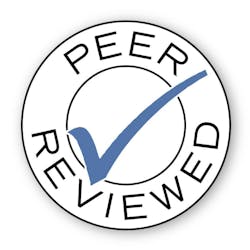Medical protocols for periodontal therapy
When I thought about the ulcerated epithelial lining being an open wound, I finally questioned: Why we don’t treat it like medical practitioners treat wounds? And in fact, why are we not using more medical protocols in general?
As a practicing dental hygienist, I’m always looking for new techniques, technologies, products, and knowledge to help my patients achieve optimal health. We’ve been talking about integrative medicine and dentistry for the last decade or longer. It’s time to implement standard medical protocols into our regular dental care.
Root cause and risk assessment
There’s a difference in the ways that medical dental practitioners approach patient care. For example, when one presents with a sore throat, the physician does a visual and tactile examination and orders a lab test to determine the root cause of the illness.1 If the test is positive for strep, the physician will prescribe a course of appropriate medication.
When a patient presents with bleeding gums, dental professionals perform a visual exam with radiographs and a periodontal probe. If periodontal disease is discovered, the patient is treated with subgingival and supragingival biofilm disruption.
What’s missing all too often is that dental practitioners are not implementing the standard medical protocol of determining the root cause of the disease and assessing risk to mitigate future recurrence and destruction of the periodontium.
The common root causes of periodontal disease are lowered immunity, systemic comorbidities or multi-morbidities, bacterial, viral, and fungal pathogens, low pH, poor nutrition, hormone imbalance, tobacco use, and poor self-care. Microbial testing to determine which pathogens are present in the oral microbiome, and may be contributing to the disease, is beneficial to long-term treatment success.
It’s also imperative to discover if the oral environment is conducive to aciduric and acidogenic bacteria, so a simple pH test offers valuable information.
The immune system needs support to be able to fight off bacterial, viral, and fungal invaders, so a discussion about nutrition, sleep, exercise, and breathing is warranted. Oral probiotics provide a way to rebalance a dysbiotic oral environment by crowding out the pathogens with commensal bacteria.
Laboratory testing
As mentioned above, laboratory testing is invaluable for providing insight into the microbial agents that may be at the root of our patient’s illnesses.2 Using a microscope to enable patients to visualize the microbes in their mouths—and having access to laboratory testing to identify those pathogens—have greatly increased my treatment acceptance. When you partner with your patients and provide excellent education, leading-edge technology and treatments, everyone wins.
Wound care
There are two different types of wounds, acute and chronic. Acute wounds occur when an injury or infection triggers the immune system response followed by complete resolution within four to six weeks.3
Chronic wounds, in contrast, remain inflamed for a long period of time, may take years to heal, or may never heal. A wound that takes longer to heal than three months is considered a chronic wound.4 A chronic wound has polymicrobial etiology and prolonged host degeneration with generalized loss of tissue function due to increased inflammatory mediators and biofilm characteristics.
Think about how similar that description is to the description of periodontal disease: periodontal disease is a chronic wound with polymicrobial etiology, that results in an ongoing inflammatory response, which leads to tissue destruction and systemic dysbiosis.
Traditionally, dental professionals have treated periodontal disease with quadrant scaling and root planing and on-going supportive periodontal maintenance. In some fortunate cases, we have seen healing and a resolution to long-term health. However, in my experience and the experiences of the hundreds of dental hygienists that I have coached or who have attended my courses, that is not the result in most cases. All too often, the result is incomplete resolution of disease and/or rapid relapse.
As a result of the frustration of not being able to deliver consistently positive results despite my most careful instrumentation and advanced techniques, I began researching alternative treatments for my patients.
I looked beyond dental research and dove into medical care for chronic wounds. That’s when I discovered Dr. Randall Wolcott, founder of Southwest Regional Foot Care Center, who specialized in the treatment of biofilm-based chronic wounds.5 This now-retired surgeon is credited with saving more diabetic limbs from amputation due to chronic wounds than any other doctor. I studied Dr. Wolcott’s medical wound care protocols and discovered that we can adopt them for our dental protocols to treat periodontal wounds more successfully.
Wound care basics
The foremost difference between traditional periodontal treatment and medical wound care is the frequency with which the wound is treated. The traditional treatment for periodontal disease is to address each quadrant once, then we bring the patient back in 4 to 12 weeks for supportive periodontal maintenance. We keep the patient on that 3-month schedule of periodontal maintenance indefinitely until we find it’s time to go back through active treatment again.
Dr. Wolcott and his colleagues treat chronic wounds with repeated debridement. This may be done weekly or every other week until healing has occurred. I have interpreted this medical practice into my periodontal protocols by performing repeated debridement of the entire mouth at least four times at weekly intervals.
Because periodontal disease is a biofilm-based chronic wound, we know it will be more difficult to treat than an infection caused by planktonic bacteria. A planktonic infection is easier to treat because a single type of bacteria, unprotected by a biofilm, is vulnerable to antibiotics and antimicrobials. A biofilm, however, protects the microbial community with an exopolysaccharide slime layer coating which is difficult for antibiotics and antimicrobials to penetrate.
Medical treatment for a biofilm-based chronic wound involves the application of an antibiotic or antimicrobial ointment after each debridement. In periodontal treatment, we can translate that practice to the application of antimicrobial medicaments to the affected areas.
We know that biofilms have adhesion properties that make them very difficult to dislodge from root surfaces and the bacteria within a biofilm clump together for added protection. Dr. Wolcott recommended the use of products with xylitol, lactoferrin, and/or arginine prevent biofilm adhesion and bacterial clumping. In dentistry, we have multiple products with xylitol, lactoferrin and/or arginine that we can apply following debridement to help prevent adhesion and clumping.
Medical protocols for chronic wound care include long-term therapy of 3 to 12 months. I interpret this as our supportive maintenance therapy which we schedule every 3 months. Addressing isolated areas of active infection during the supportive therapy appointment is like putting out the pop-up flames that firefighters see during their attempts to control forest fires. Eventually, the flames of inflammation are all extinguished and the oral microbiome can begin to heal.
Dr. Wolcott also uses hyperbaric oxygen therapy. I haven’t figured out how to get access to that yet, but stay tuned! Because I don’t have access to all the technology my medical counterparts do, I continue to supplement this process with all the ammunition I do have. I use a laser for deeper penetration into the epithelial tissues, I prescribe probiotics to reestablish a more stable and balanced microbiome, and I introduce my patients to professional self-care products that will support our clinical efforts at home. Next on my clinical wish list are ozone and guided biofilm therapy. (Are you reading this, Dr. Wilson?)
After implementing medical wound care practices, my patients and I have seen significantly better results and significantly greater satisfaction. I believe that we must continually strive to learn updated, evidence-based techniques and technologies to improve treatment outcomes for our patients.
Editor's note: This article appeared in the March 2024 print edition of RDH magazine. Dental hygienists in North America are eligible for a complimentary print subscription. Sign up here.
References
- The diagnostic process. In: Balogh EP, Miller BT, Ball JR, eds. Improving Diagnosis in Health Care. The National Academies Press; 2015:31-80.
- Ramenzoni LL, Lehner MP, Kaufmann ME, Wiedemeier D, Attin T, Schmidlin PR. Oral diagnostic methods for the detection of periodontal disease. Diagnostics (Basel). 2021;11(3):571. doi:10.3390/diagnostics1103057
- Ramasastry SS. Acute wounds. Clin Plast Surg. 2005;32(2):195-208. doi:10.1016/j.cps.2004.12.001
- Falanga V, Isseroff RR, Soulika AM, et al. Chronic wounds. Nat Rev Dis Primers. 2022;8(1):50. doi:10.1038/s41572-022-00377-3.
- Wolcott RD, Rhoads DD. A study of biofilm-based wound management in subjects with critical limb ischaemia. J Wound Care. 2008;17(4):145-148,150-152,154-155. doi:10.12968/jowc.2008.17.4.28835
Kathryn Gilliam, BA, RDH, MAAOSH, HIAOMT, educates, empowers, and inspires dental professionals to elevate their identities as oral wellness practitioners who powerfully impact the lives and health of their patients with optimal care. A published writer, consultant, international speaker, and practicing oral wellness hygienist, she founded two coaching companies, PerioLinks and Empowered Hygiene, before joining the Inspired Hygiene team as a lead productivity coach. Connect with Kathryn by emailing [email protected].
About the Author

Kathryn Gilliam, BA, RDH, MAAOSH, HIAOMT
Kathryn is an Integrative Dental Hygienist focused on optimizing whole health. She is the Founder of PerioLinks LLC, and is proud to be a Lead Clinical Coach for Inspired Hygiene. Kathryn’s interest in the medical side of dentistry led her to years of advanced study of oral-systemic connections. Nifty Thrifty’s Best Hygiene Educator of 2024, Kathryn is passionate about dental hygiene and feels her purpose is to love her patients back to health. Reach her at [email protected].



